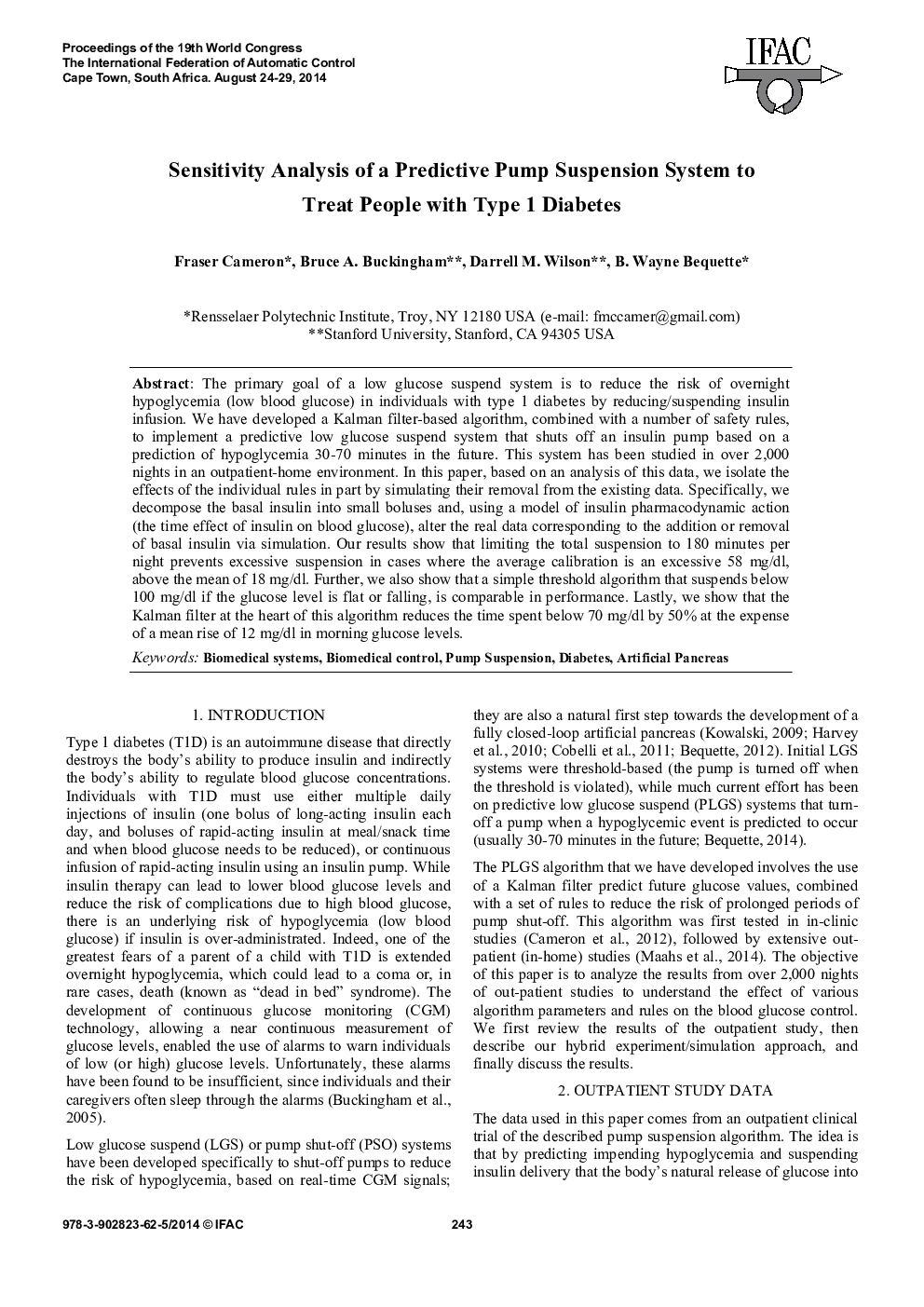| کد مقاله | کد نشریه | سال انتشار | مقاله انگلیسی | نسخه تمام متن |
|---|---|---|---|---|
| 712160 | 1461146 | 2014 | 6 صفحه PDF | دانلود رایگان |
The primary goal of a low glucose suspend system is to reduce the risk of overnight hypoglycemia (low blood glucose) in individuals with type 1 diabetes by reducing/suspending insulin infusion. We have developed a Kalman filter-based algorithm, combined with a number of safety rules, to implement a predictive low glucose suspend system that shuts off an insulin pump based on a prediction of hypoglycemia 30-70 minutes in the future. This system has been studied in over 2,000 nights in an outpatient-home environment. In this paper, based on an analysis of this data, we isolate the effects of the individual rules in part by simulating their removal from the existing data. Specifically, we decompose the basal insulin into small boluses and, using a model of insulin pharmacodynamic action (the time effect of insulin on blood glucose), alter the real data corresponding to the addition or removal of basal insulin via simulation. Our results show that limiting the total suspension to 180 minutes per night prevents excessive suspension in cases where the average calibration is an excessive 58 mg/dl, above the mean of 18 mg/dl. Further, we also show that a simple threshold algorithm that suspends below 100 mg/dl if the glucose level is flat or falling, is comparable in performance. Lastly, we show that the Kalman filter at the heart of this algorithm reduces the time spent below 70 mg/dl by 50% at the expense of a mean rise of 12 mg/dl in morning glucose levels.
Journal: IFAC Proceedings Volumes - Volume 47, Issue 3, 2014, Pages 243–248
